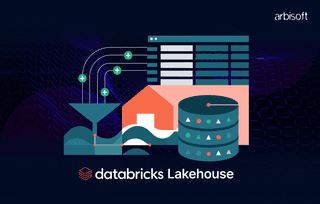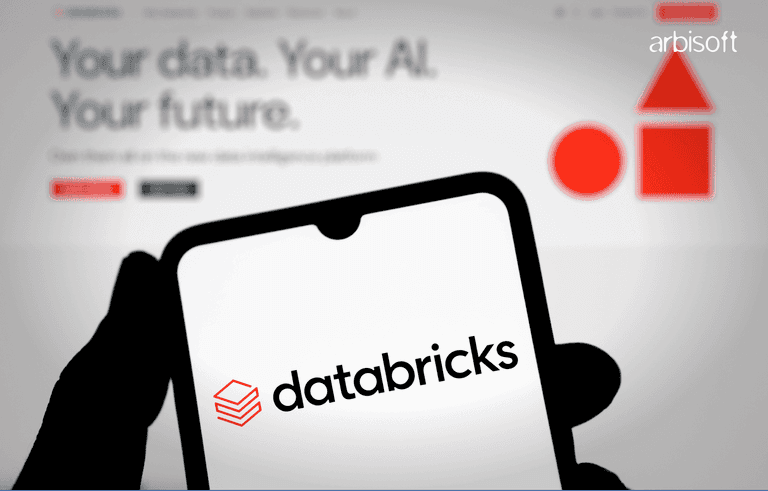We put excellence, value and quality above all - and it shows




A Technology Partnership That Goes Beyond Code

“Arbisoft has been my most trusted technology partner for now over 15 years. Arbisoft has very unique methods of recruiting and training, and the results demonstrate that. They have great teams, great positive attitudes and great communication.”
Is Alibaba’s Qwen2.5-Max Doing Something Extraordinary? Here's What You Need to Know

The AI space is changing faster than ever, marking a new chapter in the Chinese AI revolution, and Alibaba has just introduced something new, Qwen AI 2.5‑Max. This AI model, created by Alibaba’s Qwen team, is making headlines because it can do a lot. It understands text, images, and videos and can even interact with apps. The big question is, is Qwen AI 2.5-Max doing something truly extraordinary that other AI platforms aren’t? Let’s break it down and see how it compares to its biggest competitors.
What is Qwen2.5-Max?
Qwen AI 2.5-Max Alibaba was launched on the first day of the Lunar New Year as part of Alibaba’s growing AI family. It’s a smart and flexible model that can analyze text, recognize images, understand videos, and even control software. Simply put, it can handle different types of data at the same time.
Unlike DeepSeek V3 or OpenAI’s GPT-4, which focuses on specific tasks, Qwen2.5-Max is built for general use. This makes it useful in many areas.
This version builds on Qwen 2.0 but comes with major upgrades, including more computing power, a bigger training dataset, and better fine-tuning. The Qwen series is now a key part of Alibaba’s Cloud Intelligence strategy to grow its AI technology worldwide.
Key Features of Qwen 2.5-Max
1. Mixture-of-Experts (MoE) Architecture:
One of the standout features of Qwen2.5-Max is its Mixture-of-Experts (MoE) architecture. MoE allows the model to be both powerful and efficient by activating only a subset of the model's total parameters based on the task at hand. In simpler terms, it’s like having a team of experts who specialize in different fields: only the relevant experts are brought in when needed, saving computational resources while ensuring accuracy.
2. Large Scale and Fine-Tuned Capabilities:
OpenAI's GPT-3 was trained on approximately 570 gigabytes of text data, encompassing around 300 billion tokens. DeepSeek's V3 model expanded this scale, being pre-trained on 14.8 trillion diverse and high-quality tokens. Building upon these developments, Alibaba's Qwen AI 2.5-Max was trained on a massive dataset of over 20 trillion tokens, making it one of the largest language models available.
Alibaba also fine-tuned the model using Supervised Fine-Tuning (SFT) and Reinforcement Learning from Human Feedback (RLHF). These fine-tuning methods ensure that the model not only produces accurate information but also generates responses that align with human preferences, making it more user-friendly and responsive.

Training Process
Training an AI model of this scale requires significant computational resources and a vast amount of data. Here’s a look at how Qwen2.5-Max was trained:
1. Training on 20 Trillion Tokens
A token is a unit of text, and 20 trillion tokens represent a vast amount of information. To give an idea, the training dataset is so large that it would be equal to reading the entire contents of 168 million copies of George Orwell’s 1984! This huge dataset gives Qwen2.5-Max the ability to understand and respond to a wide variety of topics.
2. Supervised Fine-Tuning (SFT)
After the initial training, Alibaba used SFT to improve the model’s ability to handle specific tasks like conversational AI, question answering, and content generation. This method involves experts guiding the model by providing examples of correct responses.
3. Reinforcement Learning from Human Feedback
RLHF is a technique that helps improve AI performance based on human feedback. By simulating real-world interactions and refining responses, Qwen2.5-Max learns to behave more naturally in conversation, offering outputs that feel more human-like.
Performance Benchmarks
To measure the performance of Qwen2.5-Max, Alibaba has tested it on various benchmarks across multiple AI tasks. Here’s how the model stacks up against other popular models like GPT-4o, Claude 3.5 Sonnet, and DeepSeek V3:
Instruct Model Benchmarks

Image source: GitHub
These benchmarks test how well the model performs on tasks such as responding to instructions, problem-solving, and natural language understanding.
- Arena-Hard (Preference Benchmark):
Qwen2.5-Max scored 89.4, which is higher than DeepSeek V3 (85.5) and Claude 3.5 Sonnet (85.2). This benchmark measures how much users prefer the model’s responses, and Qwen2.5-Max leads the pack in user preference. - MMLU-Pro (Knowledge and Reasoning):
This measures the model’s ability to apply reasoning across multiple domains. Qwen2.5-Max scored 76.1, slightly behind Claude's 3.5 Sonnet (78.0) and GPT-4o (77.0), but still solid in terms of general knowledge. - GPQA-Diamond (General Knowledge QA):
On this benchmark, which tests general knowledge through question answering, Qwen2.5-Max scored 60.1, outshining DeepSeek V3 (59.1) but lagging behind Claude 3.5 Sonnet (65.0). - LiveCodeBench (Coding Ability):
Qwen2.5-Max scored 38.7, which is competitive with Claude 3.5 Sonnet (38.9) and DeepSeek V3 (37.6), demonstrating its proficiency in coding tasks. - LiveBench (Overall Capabilities):
Scoring 62.2, Qwen2.5-Max outperforms both Claude 3.5 Sonnet (60.3) and DeepSeek V3 (60.5), showing its overall strength across a variety of tasks.
Base Model Benchmarks

Image source: GitHub
Base models are evaluated on their general capabilities, without fine-tuning for specific tasks. Here’s how Qwen2.5-Max fares on these tests:
- General Knowledge:
On MMLU and C-Eval, Qwen2.5-Max scored 87.9 and 92.2 respectively, outperforming other open-weight models such as Llama 3.1-405B and DeepSeek V3. - Coding and Problem-Solving:
It scored 73.2 on HumanEval and 80.6 on MBPP, highlighting strong coding capabilities compared to other models like DeepSeek V3. - Mathematical Problem-Solving:
While Qwen2.5-Max performed well on GSM8K (94.5), it scored lower on MATH (68.5), indicating room for improvement in solving advanced mathematical problems.
The Global Impact of the AI Rivalry
The competition between Alibaba and DeepSeek isn’t just a local issue—it’s having an impact on the entire AI industry.
Pressure on U.S. AI Companies
DeepSeek’s fast growth has caught the attention of leaders worldwide. Sam Altman, CEO of OpenAI, praised DeepSeek-R1 as a strong model, especially for its cost-effectiveness.
U.S. President Donald Trump also spoke out, saying the rise of Chinese AI companies is a warning for American businesses. He urged U.S. companies to rethink their AI strategies and focus more on efficiency rather than spending large amounts of money.
“Instead of spending billions and billions, you’ll spend less, and you’ll come up with, hopefully, the same solution,” Trump said.
Also, to compete, the U.S. has launched the Stargate Project, an initiative to strengthen its AI capabilities.
Concerns Over OpenAI's Intellectual Property
As AI competition increases, OpenAI has raised concerns that Chinese companies may be using its intellectual property in their AI systems. This has led to growing tension over intellectual property in the AI field. OpenAI has even suggested that it may need extra help from the U.S. government to protect its innovations. This situation shows how hard it is to protect unique technologies in such a fast-moving industry, creating opportunities for every leading AI development company to innovate responsibly. It also points to the need for stronger global rules to manage AI development and protect intellectual property.
Is Qwen2.5-Max Truly Extraordinary?
Qwen2.5-Max is advancing the capabilities of AI by handling multiple data types, including text, images, and video. Its ability to control apps sets it apart from other platforms, offering exciting new possibilities in business automation and content creation. While there are still some performance issues to address, it’s clear that Qwen2.5-Max is making significant strides in the AI space.
Alibaba has shown that it is not just participating in AI; it is emerging as a major player. How Qwen2.5-Max will develop and compete with models like DeepSeek, ChatGPT, and NVIDIA remains to be seen. However, Qwen2.5-Max represents a major leap forward in AI technology.
How to Access Qwen2.5-Max
There are two primary ways to access Qwen AI 2.5-Max:
- Qwen Chat: The simplest way to interact with Qwen2.5-Max is through Qwen Chat, a web-based platform. No installation is required. You can just visit the site, start a conversation, and experience the AI’s responses.
- API Access via Alibaba Cloud: For developers and businesses, Qwen2.5-Max is accessible through Alibaba's Cloud Model Studio API. You’ll need to create an Alibaba Cloud account, activate the service, and generate an API key to integrate Qwen2.5-Max into your own applications.
Conclusion
Qwen AI 2.5-Max is an important step in Alibaba’s AI journey. While it is not open-source, Qwen AI 2.5-Max is available through Qwen Chat or an API for developers, making it available for both individuals and businesses. As Alibaba keeps investing in AI, Qwen2.5-Max may just be the first of many powerful AI models to come.
For anyone looking to stay ahead in AI, Qwen2.5-Max offers a strong and easy-to-use tool that could change the way AI applications are built.
























